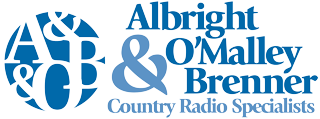- 07/10/2018
- Posted by: Mike O'Malley
- Category: radio programming

“So how was your Fourth of July?” was likely one of the questions you were asked a lot last week.
Hopefully you could truthfully answer that it was terrific.
But what if you were asked, “How was your station website’s Fourth?”
OK, nobody’s going to ask that. But that doesn’t mean that listeners didn’t attempt engage with your home page.
The truth is, your homepage is still a significant touch point. It is a representation of your brand that communicates your values and what you consider important to your audience.
Traffic Report
Over the years, A&O&B’s Roadmap has noted a decline in the percent of 18-54s who reported they visited a station website in the past 30 days (the red line in the chart below).
However what we haven’t seen is a decline in the percent of these listeners who say they are “very interested” in finding “things to do in town” when they do access the station’s website. In fact, that 18-54 number grew roughly seven percentage points in the three years from 2015-2017.

And that trend holds up when isolating 18-34’s.

Sure, the percent of listeners visiting station websites is notably smaller than the percent who report following a station on Facebook. In 2018 that disparity was 82.6% vs. 57.2%.
And updating via social is usually a lot faster and simpler than web page wrangling. Indeed the lack of time and level of difficulty to post to your homepage can lead to a reliance on what corporate may provide which may not be easy to localize to any great degree.
Still, the strongest brands recognize the critical nature of meeting (or ideally surpassing) consumer expectations at all touch points. And, despite a decline in regular visits, station websites remain a significant a platform for well over half the audience.
4th of July Website Field Trip
This year, A&O&B’s annual and decidedly unscientific 4th of July Home Page Field Trip visited 17 radio station websites in five formats and in various sized markets to see how many were reflecting their listeners’ Independence Day lifestyles.
Here’s how it went:
- Four stations had no 4th of July content of any kind – not even a slider.
- Eight stations had one 4th of July related item.
- Five stations featured two or more items with one of those posting seven pieces including local guides to both fireworks locations and 4th of July events.
Three Ways to Make the Process Easier
- Advance planning will help you create and display the richest content. Some material can be produced well in advance. Doing so is a hedge against not having a dedicated person to do creating and updating and will free up time to explore events with minimal up-ramps. A combination of both of these types of content – current and evergreen – was what our seven-story-station featured. Working ahead allows for a greater variety of pieces and eases the time issues associated with website posts.
- Create a Q and A list that can help you explore multiple angles – some of which will be related saving you time in the research and assembly process. Answering questions like “What activities will listeners take part in?” “What will be their collective mindset?” “What will they find useful?” “What will be fun and entertaining?” and “What will deliver an emotional impact?” will help you create rich, original material that will deliver a solid experience because it will be in sync with “visitor intent.”
And don’t forget clients. Many of your own advertisers can be sources for content. Plus, for those advertisers who are always looking for digital involvement, special website features can provide you with a reason to make a sales call. This mind set can also serve as a deadline motivator.
- Archive everything. What you wrote and the visuals you created this year could be valuable for next year either to build upon or as inspiration for a new piece. For these reasons, regularly revisit what you’ve already written. Similarly, review and save others’ writings that have an angle that you can use on a new, original piece. Write a paragraph that connects this angle with your broader topic; this will serve as a reminder while giving you a head start on your own piece. Generally the more you write, the more ideas you’ll generate.
Why It All Matters
Every day we strive to make a one-on-on connection with the audience. We want them to feel that our station provides a unique, very special, personal connection – whether that’s via a mic break that triggers an emotion, a brand-building eureka idea for a client, or sharing carpe diem information and inspiration.
In this same way your website is far more valuable than just being a promotional vehicle. It’s a place to provide yet another positive touch point experience and thus and additional bonding instance.
Different platforms have their own strengths and time requirements – but they share the same bottom line:
To help us be a friend that can be counted on and with whom time spent is always worthwhile.
Related: Station Websites Abandoned in Favor of Facebook?
